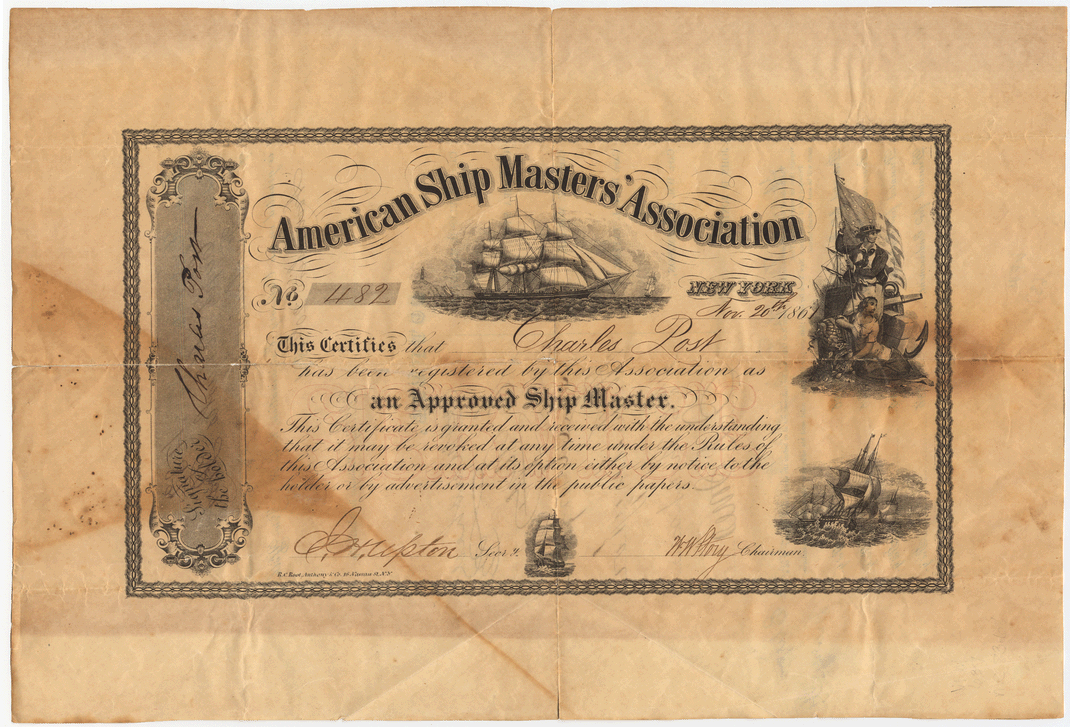
Printed document, approximately 6 1/4″ x 11″, enclosed by 1/4″ embellished border. “American Ship Master’s Association ” is engraved on the upper portion of the certificate. Below is an engraving of a full-rigged ship, on the left side of which is the number of the certificate and on the right side of which is engraved “New York,” home of the Association and site of the 1861 examinations. The signature of the certificate holder was required, as were the signatures of various members of the society. The engravings and ornamentation varied throughout the years that these Certificates were issued.
The American Shipmasters’ Association, later the American Bureau of Shipping, was organized in 1861 to improve the American Mercantile Marine Service and the general skill and moral character of those attached to the seamen’s profession. Licenses had been issued intermittently by the United States Steamboat Inspection Service, but no continuous effort had been made to insure the skill and character of shipmasters until John D. Hones called together maritime insurers, shipbuilders, government officials and maritime experts to form the American Shipmasters’ Association in 1861. The ASA began issuing certificates to qualified mates and masters of sailing vessels even before its incorporation in 1862, receiving the first application from Captain Isaiah Pratt in September 1861.
To receive a certificate, seamen had to meet rigorous requirements, including six years experience at sea and a high score on the nautical science and seaman ship examinations administered by the ASA. Applicants also had to produce testimonials to their good character. Shipmasters whose qualifications were exceptional were designated “extra maters.” Each certificate was valid for one year and could be renewed annually. Seamen retained their ASA numbers for life; no number was ever reissued to another man. While ASA certificates were not officially required of shipmasters, they did serve as recommendations to shipowners. A vessel with an ASA-certified master was more likely to find favorable insurance coverage than one whose master was not listed in the ASA’s Register of Approved Shipmasters. The ASA continued its program of certification until 1900, by which time Federal law required that most shipmasters be licensed by the United States.
